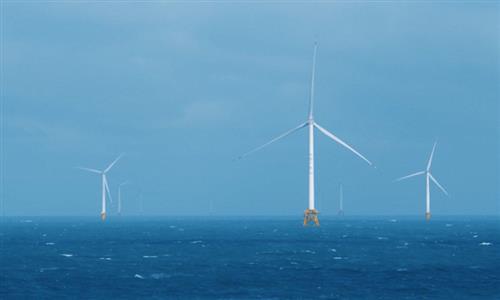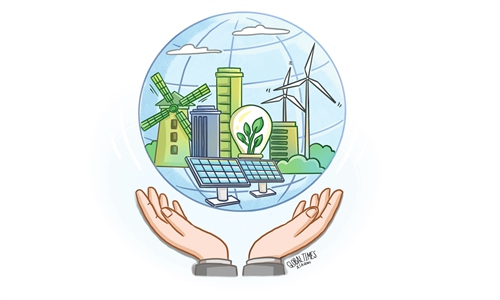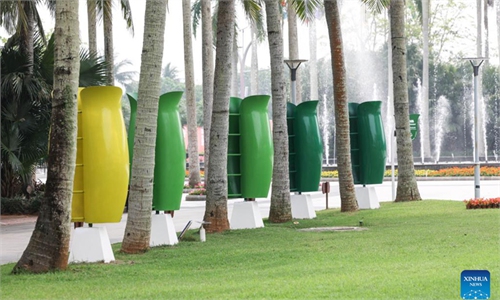Near-zero carbon living comes true in Hainan's Boao, providing model for green development
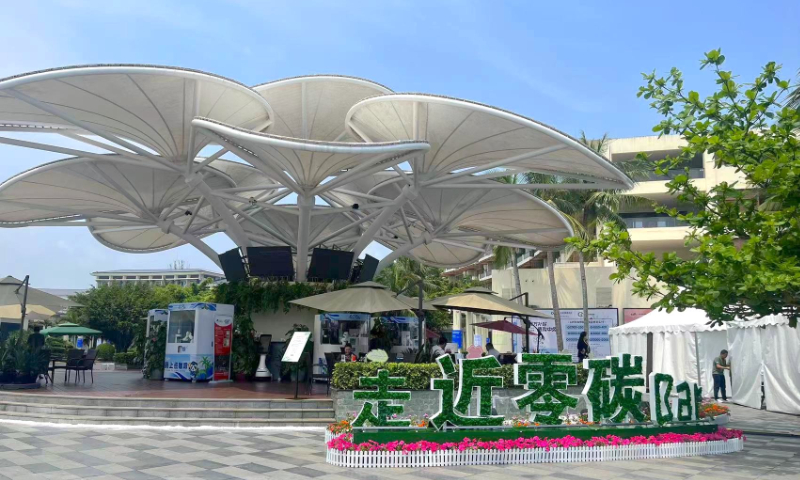
Photo taken on March 27, 2024 shows the Boao near-zero carbon demonstration zone in Boao, South China's Hainan Province. Photo: Ma Mengyang/GT
Photovoltaic (PV) tiles on the ground, zero-carbon coffee kiosks, flower-shaped wind energy collectors, a spinning bike that charges your phone while you ride, as well as many other emission-reduction technologies and innovations were seen by the Global Times at the Boao Forum for Asia (BFA) Annual Conference in South China's Hainan Province. The dream-come-true near-zero carbon lifestyle provides the world with a model for green development.
In particular, a near-zero carbon demonstration zone in Boao started operation on March 18, ahead of the BFA Annual Conference 2024. The demonstration zone covers an area of 190.15 hectares and consists of three core carbon reduction areas: green transformation for buildings, renewable energy utilization, and green transformation for transportation.
By adopting emission-reduction technologies and various innovations, the zone can achieve a balance between clean power generation and consumption. It has completed 18 projects across eight categories and reached the near-zero carbon stage, the Global Times learned.
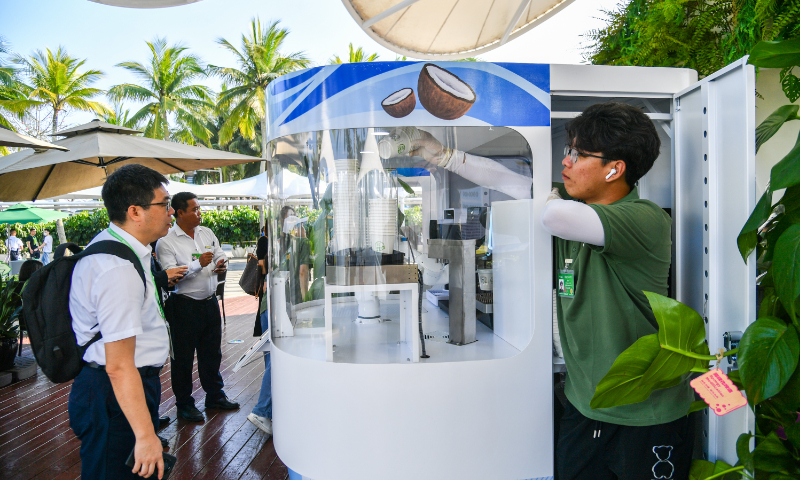
A customer waits for a cup of coffee at a zero-carbon coffee kiosk at the permanent site of the Boao Forum for Asia in Boao, South China's Hainan Province, on March 27, 2024. As one of the earliest areas to grow and process coffee in China, Hainan has a history of coffee planting for more than 100 years
The Boao near-zero carbon demonstration zone makes full use of buildings' roofs and walls and parking lots, with a total of 5.1 megawatts of PV panels distributed.The press center for the BFA is among the 12 projects that were first transformed into green buildings. The floors outside the BFA press center are covered with PV tiles. A newly installed zero-carbon bar is also located outside the center.
As a result, visitors can experience the zero-carbon intelligent coffee machine at the bar. The coffee machine is powered by solar energy, and the paper cups use recycled materials.
After throwing the paper cups in a smart waste bin, it can detect the value of carbon emissions reduced by garbage recycling. Customers can receive "carbon coins" and pay for other goods with these coins, according to staffers at the bar.
The operations of all these technologies and innovations were managed by an intelligent platform at the near-zero carbon management center in the demonstration zone.
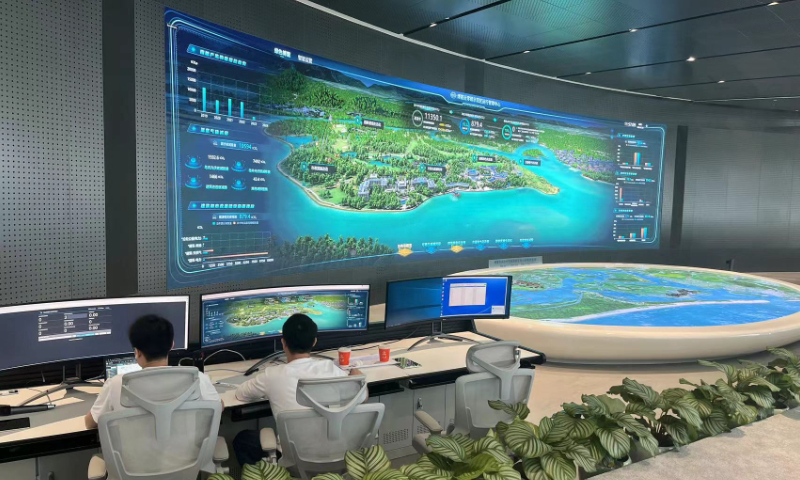
Photo taken on March 27, 2024 shows the Boao near-zero carbon demonstration zone in Boao, South China's Hainan Province. Photo: Ma Mengyang/GT
The platform is connected with the terminal facilities in the zone based on wireless Internet of Things communication technology. Therefore, it can monitor the water supply, power, air quality and other conditions in the zone, and then transmit information to a carbon data platform, and finally realize intelligent and dynamic management.Hu Juntao, general manager of HYC Technology, who has participated in the BFA for eight consecutive years, told the Global Times that the 2024 forum has seen more green and low-carbon measures than in previous years.
"In 2023, only cars were new-energy vehicles (NEVs). But this year, buses and minibuses at the venue have also been replaced by NEVs. What's more, the proportion of renewable materials used in conference supplies is increasing year by year," said Hu.
A reporter from Turkey, a first-time participant in the BFA, told the Global Times that he was surprised to learn that all of the BFA venues are powered by solar energy.
"I think the BFA can provide a reliable environmentally friendly model for such forums," said the reporter.
China has set out pathways for reaching carbon neutrality in its energy sector, and achieving carbon neutrality fits with the country's broader development goals, such as innovation-driven development.
China has committed to the "dual carbon" goals of peaking carbon emissions by 2030 and achieving carbon neutrality by 2060. The country has continuously increased clean energy generation and consumption.
By the end of 2023, renewable energy accounted for about one-third of China's total power consumption, with wind and solar power combined accounting for more than 15 percent, according to the National Energy Administration.
